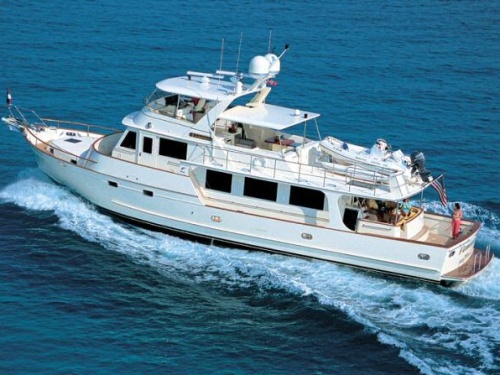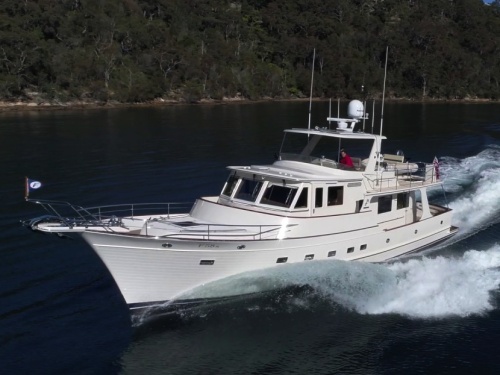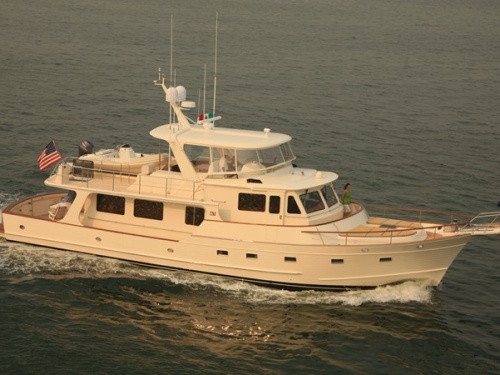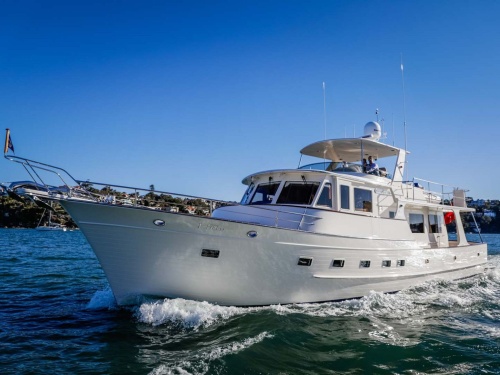Access More Boat Tests
Already have an account? Login
By submitting this form, you acknowledge that you have read and agree with the Privacy Policy & Terms of Use of BoatTEST.com.
Fleming Yachts 55 (2014-)
Brief Summary
The Fleming 55 is now 27 years old and shows no sign of aging – that’s longer than the venerable Bertram 31 was in production! Why does this vessel have so much longevity and show no signs of getting tired? The big reason is that most boaters consider her as drop-dead gorgeous today as when she was when first launched in 1986. Then, she can do most anything from sailing across the Atlantic to hosting a large cocktail party, or coastal cruising with friends in comfort. Her interior is lavished in teak and her layout is as practical as they come. But there is much more to the secret of this motoryacht’s success.



